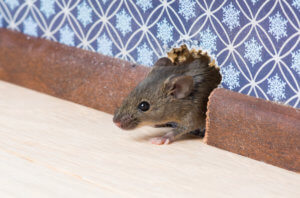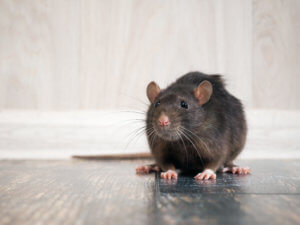As a preface to this article, there were 4 recent class action lawsuits that were filed against Honda, Toyota, KIA, and Hyundai claiming that defective soy based wiring has lead to an increase in rodent damage in their cars. Each of these car manufacturers refuses to cover rodent damage under their warranty and is therefore leaving the customer and the insurance companies to pay the bill (most bills of which are very expensive!).
It might be a surprise to you to hear that these car manufacturers are actually benefiting from the damage that these rodents are causing. Here is how:
- Dealerships Get More Business – Because soy based wiring is mostly prevalent in newer cars, customers see the engine light come on and think “whatever it is” would be covered by warranty. So this leads customers to bring their cars back to the dealership they recently purchased or leased the car from versus a local mechanic. Once the cause is found, it becomes too much of a hassle to take the car into a different mechanic and end up giving the business to the dealership.
- Expensive, Labor Intensive Work – Replacing wiring on a car engine also involves taking the engine apart and that takes time. Some wires can take hours of labor just to replace and the cost of labor is the most expensive portion of any car repair bill.
- Insurance Requires Factory Made Parts – If you own a newer car and still owe a decent amount of money to the bank or you leased your car, you most likely have comprehensive insurance coverage. This type of insurance covers rodent damage and will require the mechanic to use factory made parts (i.e. parts made by the car manufacturer) versus potentially cheaper third party made parts to repair the damage. So even if you go to a non-dealership mechanic, money will still be flowing to the car manufacturers.
- Honda’s Rodent Tape – Honda has manufactured a tape that is infused with capsaicin (i.e. the active component of chili peppers that makes them hot) that you can wrap around the wires. Now Honda has really proven themselves as pure slime here! They make a defective part that is more prone to damage, the mechanic will be required to purchase the same defective replacement parts from Honda, they then make money off of a tape that supposedly fixes the problem (that they are causing!), and finally it requires a ton of hours of labor to install which will most likely be done at one of their dealerships!!!! AHHHH! Now Honda isn’t the only car manufacturer to benefit from this! Honda doesn’t exclusively sell this tape to Honda owners but actually makes it available to the public. So other car manufacturers benefit too from the cost of labor to install the tape as well.
With all his said, it doesn’t surprise me that the car manufacturers are taking a hard stance in the courts to defend their use of soy based wiring in their cars because it’s a hidden revenue source.
Customers are being taken advantage of and I need your help in spreading the word about this! I would greatly appreciate it if you could share this article among any appropriate social media platforms and help get the word out.
I am happy to answer any questions, so please a comment below!
Thank you!!
Rat King Dave
This page contains Amazon Affiliate links. I will receive a commission for any purchases made through these links, though at no additional cost to you.






Hi Raymond & Rat King Dave,
I believe the 2018 Rav 4 is also soy based. I haven’t even put 10,000 Kim on my Rav 4 and am awaiting wiring harnesses after the rodents have chewed through a number of wires. In 35 years of owning vehicles I have never had this happen. It is a serious issue which I wish the manufactures would own up to and make the appropriate changes.
Hi Shirley! Ahh that is good to know and I apologize for the delay in my response. Essentially, all the large car manufacturers are using the same type of wiring. It’s a bummer that the consumers are kind of stuck in the middle here with the issue. Just means we need to take matters into our own hands. I’m sure that by now your car has been fixed, but please be sure to keep checking under the hood for more signs of damage. Once the car has been hit once, the rodents are more likely to come back. If any questions pop up, I’m happy to help. Thank you! RKD
My family has had three different vehicles damaged by rats. My sister’s Dodge Charger had $5500.00 worth of damage. My other sister’s Lexus $7900.00. Right now my Challenger is at the dealership with $500.00. Something has to be done. All three of these vehicles were at different addresses and older vehicles on the properties were not bothered.
Hi Dwight! Arghhh! Yeah that’s crazy man… not sure if you saw the more recent article I wrote on the soy based wiring lawsuits but all of them were dismissed. Regardless of whether soy based wiring increases the chances of a car being eaten by rodents, the rodent population is continuously increasing. Please be sure to follow the steps on the home page once you get your cars back from the mechanics. Now that they’ve been attacked once, it is more likely to happen again. If you have any questions about the methods suggested, please ask away. Thanks for sharing your unfortunate scenario and I hope the info provided can help you and your fam. Thank you. RKD
I have a 2015 Subaru Forester, mice have nested inside the cabin. I had to have the headliner and rear quarter panels, and of course the soy based wiring that runs thru the liner replaced. Over 3000. dollars. Insurance covered all but deductible. This is also a health issue when they get inside. I have been using peppermint, irish spring soap, an electric noise anti rodent plug in , cab balsam fir bags, snap traps inside the car, live traps outside the car. I would love to buy a vehicle without biodegradable wiring. If I keep it I will seal off known openings. I may have to go with an older car. Or I am looking into building a wall around my parking space with sheet metal or plexiglass. Does anyone think 2 feet high is to low for keeping out just mice.
Hi Maggie! Wow, sounds like you have tried everything. Nice work on implementing a multi-solution approach! If you are looking for a new car, specifically ask the car salesperson to disclose if there are any bio-plastics used in the car. Depending on your state, they might be required by the Lemon Law to disclose this information. If they fail to disclose this information you could at least say it is required by the Lemon Law to disclose this information. RE: The wall, if you use a metal, make sure it is something harder than copper. Mice and Rats can chew through copper. Mice are pretty good at climbing so make sure there aren’t any ledges that they can climb up on. Two feet should be sufficient, 2.5 feet to be safe. Hope this helps. Thank you!
New 2018 Honda Accord about 3 weeks old with 124 miles got rat eaten same carport have had other cars in for decades with no rat issues. Ate wiring harness about $1200 to repair and about $200 for them to but on rodent resistant wiring.
Hi Dave! Dang. You only had the car for 3 weeks! Yikes. The wiring harness was what the rodents chewed up on my Civic as well. Part of the problem is that rodents multiply so quickly. Over time, this problem is going to get worse and worse regardless of the wiring that the companies use because the rodents are overcrowded and just need some shelter. Anyways, since you are under siege it’s super important to put up some defenses. Please be sure to follow the steps in this article to prevent further rodent damage. If any questions come up, please feel free to ask! Thank you! RKD
jUST RECEIVED MY 2016 HYUNDAI GENESES FROM THE SERVICE DEPARTMENT.
RODENT EATEN WIRING.. COST $10,098.65 DUE TO SOY BASED WIRING
HYUNDAI ANSWER… WE DO NOT USE SOY BASED WIRING…
HA.
Yikes!! Very interesting that Hyundai denied even acknowledging that they use soy-based wiring. I think it’s pretty common knowledge that they do so this is a bit shocking to me. I must say, you beat my record of $9k damage to my Sonata. Damn rodents really seem to like Hyundai cars. Anyways, please understand that your car is more vulnerable to rodent damage now even after you get the car fixed. Please be sure to follow the prevention steps listed in the article above. Hope this helps! Keep us posted on progress! RKD
I have a 2017 ford edge with a rodent damaged wiring harness. The replacement parts will not be available until sometime mid july. It is now the first of june and the vehicle has been at the dealers for a week. I asked the dealer if they would buy back the vehicle and they will only give me $24,000. for it. The vehicle had 33,000 km on it when purchased and it has 35,000km now. It was purchased last Oct 2017 at $35,500. With the trade in ($7500) and tax the total price was $32,000.
I have a 2013 F150 which I bought new and so far it is OK. It has always been parked in the same location as the Edge.
I am thinking of getting a chevy equinox , perhaps a 2015-2017 version. Do you have any stats on rodent damage for this vehicle?
Hi Virginia! I took a leave of absence from this website and now I am back! In looking through old comments, I apologize I never responded to you! And I’m sorry to hear about the rodent damage and your Ford Edge. I hope that you were able to figure out a good solution for getting a replacement vehicle. To answer your question I don’t have any specific stats about cars makes and models and such. I just know that for any dar made within the last 10 years, there is a very high likelihood that soy based wiring is used. Regardless, it is important to not let your guard down and to continue to check under the hood for signs of rodents. They can strike at any time. Hope you have been well and stay safe out there! RKD
I’m in the market for a new car as my 2006 Honda has been infiltrated for years by mice. Insulation under hood has been completely eaten and would cost over $4,000 to replace (quoted by my dealership) Mine is the only car on our property that gets chomped. My question, because Honda told me they can’t divulge if they use soy coated wiring or soy insulation in their new models because it’s proprietary, then what car should I buy??
Hi Hilary! Sorry for not responding yet! To be honest, pretty much every large car manufacturer is using soy-based wiring. Depending on which state you live in, the car dealership/sales person is required by law (i.e. the Lemon Law) to disclose any material information about the car they are selling. I would suggest reminding whomever Honda sales person you are working with that they are required to disclose this information by law (even though this is somewhat of a moot point if pretty much every newer car has the same problem). I would highly suggest heading over to the Home page and implementing some preventative measures. I hope this helps! RKD
FIANCEE IS Dealing with same issue right now !!! Grrrr on a lease vehicle ( Ford Fusion 2016) Lease – pretty shitty of Ford to exclude this COVERAGE from warranty when they are causing it. But check your auto insurance, the Comp should cover it minus the deductable.. Still shitty all the way around
Yeah I agree! I couldn’t believe it wasn’t covered when I was dealing with my cars getting fixed! Just a crappy situation.. Appreciate the comment! Thanks!!
Damnit, you’ve uncovered our vast wiring harness conspiracy.
Hahaha! Can’t hide in the shadows forever!
What about the Nissan Rough, this is the second time I had to take my vehicle in. The first time was the window washer wiring in which I didn’t had to paid because the vehicle was under warranty. Now this time they telling me that a rodent got into the wiring harness, so I am going through my insurance..had to get rental car. Will see how it’s going to be..ouch.
Yea we had to go through our insurance. 2000 worth of damage. I tried Ratawy.com. Seems to help.
Hi Brenda! I would say if it’s a newer car it most likely has soy based wiring. You could ask the dealership and they should be truthful with you. Depending on your state, they are required by the Lemon Law to disclose this to potential buyers. Remind them of this… If you need some help with how to prevent this from happening, please head over to the home page and feel free to let me know if you have any questions! Thank you! RKD
My daughter bought a 2017 Rav 4 this year. It had mice eating the wires twice. What can we do to prevent this? Trade in for a 2018. I see that they stopped putting the soy on the wires in 2016. Is this correct?
Hi Raymond, I apologize for the delay in my response! Please see the home page and follow the steps there for prevention. I will be updating the home page to notate that the steps for rats are exactly the same for mice except you use mice snap traps instead of rat snap traps. As for the 2018 models, I actually don’t know if they stopped using the soy based wiring. I highly suspect that they have not stopped using the soy based wiring especially given a pledge by many large car manufacturers to increase their use of bioplastics in cars by 400% over the next 5 years. No 2018 models have been named in the lawsuits but that is just because of the timing in which the lawsuits were filed. Hope this helps! Please let me know if you have any more questions! I promise I will respond more promptly next time! RKD